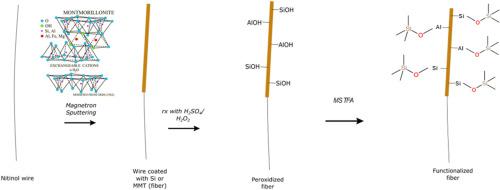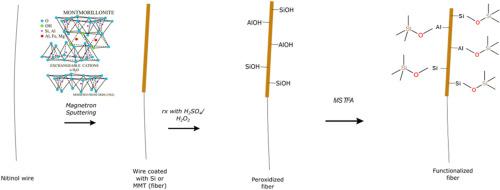通过射频磁控溅射技术检测水样中低极性化合物的新型绿色粘土涂层固相微萃取纤维
IF 5.7
2区 化学
Q1 CHEMISTRY, ANALYTICAL
引用次数: 0
摘要
背景开发高灵敏度和高选择性的测量技术来检测各种基质中的痕量化合物是分析化学领域的一项重大挑战。这些技术必须遵守绿色化学原则,最大限度地减少有机溶剂的使用、简化样品制备和流程步骤。此外,由于环保意识的增强,对可持续分析方法的需求也在不断增长。本研究解决的问题是需要一种环保、高效的方法来萃取和检测水样中的痕量有机氯农药。之所以选择蒙脱石粘土,是因为它具有优异的吸附性能和环保特性,符合绿色化学原则。该方法包括在 SPME 纤维上涂覆疏水改性蒙脱石粘土,然后进行硅烷化处理。对该方法进行了测试,以提取包括 BHC、林丹和 DDT 在内的 12 种有机氯农药模型,结果表明该方法具有很高的分离效率。使用标准光谱技术对涂层薄膜及其硅烷化改性进行了表征,证实了新吸附相的成功创建。直接浸泡 SPME 方法的相对回收率为 65% 至 99%,重现性(RSD)低于 6%。我们的方法为痕量有机氯农药的萃取和检测提供了一种环保、高效的解决方案。我们的方法为痕量有机氯农药的萃取和检测提供了生态友好型的高效解决方案。回收率和重现性的显著提高,以及较低的检测和定量限,凸显了该方法在加强环境监测和公共卫生分析实践方面的潜力。此外,该方法使用可持续材料和工艺,符合全球在分析化学领域减少环境影响的努力。本文章由计算机程序翻译,如有差异,请以英文原文为准。


New solid phase microextraction fibers with green clay coating via radio frequency magnetron sputtering for detecting low-polar compounds in water samples
Background
Developing highly sensitive and selective measurement techniques to detect trace compounds in diverse matrices is a significant challenge in analytical chemistry. These techniques must adhere to green chemistry principles by minimizing organic solvent use, simplifying sample preparation, and streamlining process steps. Additionally, there is a growing need for sustainable analytical methods due to increased environmental awareness. The problem addressed in this work is the need for an eco-friendly and efficient method for the extraction and detection of trace organochlorine pesticides in water samples.
Results
We employed SPME using a novel clay thin film sorbent, deposited on a nickel-titanium alloy wire via magnetron sputtering. Montmorillonite clay was chosen for its excellent adsorption properties and eco-friendly nature, aligning with green chemistry principles. The approach involved coating the SPME fiber with hydrophobic modified montmorillonite clay, followed by silylation. The method was tested for extracting 12 model organochlorine pesticides, including BHC, lindane, and DDT, demonstrating high isolation efficiency. The coated thin film and its silylation modification were characterized using standard spectroscopic techniques, confirming the successful creation of a new adsorbent phase. The direct immersion SPME approach achieved relative recoveries ranging from 65 % to 99 %, with reproducibility (RSD) below 6 %. This method provided low detection limits (10–15 ng L−1) and quantitation limits (32–50 ng L−1).
Significance
Our approach offers an eco-friendly, highly efficient solution for the extraction and detection of trace organochlorine pesticides. The significant improvement in recovery rates and reproducibility, combined with low detection and quantitation limits, underscores the potential of this method to enhance analytical practices in environmental monitoring and public health. Furthermore, the use of sustainable materials and processes aligns with global efforts to reduce environmental impact in analytical chemistry.
求助全文
通过发布文献求助,成功后即可免费获取论文全文。
去求助
来源期刊

Analytica Chimica Acta
化学-分析化学
CiteScore
10.40
自引率
6.50%
发文量
1081
审稿时长
38 days
期刊介绍:
Analytica Chimica Acta has an open access mirror journal Analytica Chimica Acta: X, sharing the same aims and scope, editorial team, submission system and rigorous peer review.
Analytica Chimica Acta provides a forum for the rapid publication of original research, and critical, comprehensive reviews dealing with all aspects of fundamental and applied modern analytical chemistry. The journal welcomes the submission of research papers which report studies concerning the development of new and significant analytical methodologies. In determining the suitability of submitted articles for publication, particular scrutiny will be placed on the degree of novelty and impact of the research and the extent to which it adds to the existing body of knowledge in analytical chemistry.
 求助内容:
求助内容: 应助结果提醒方式:
应助结果提醒方式:


